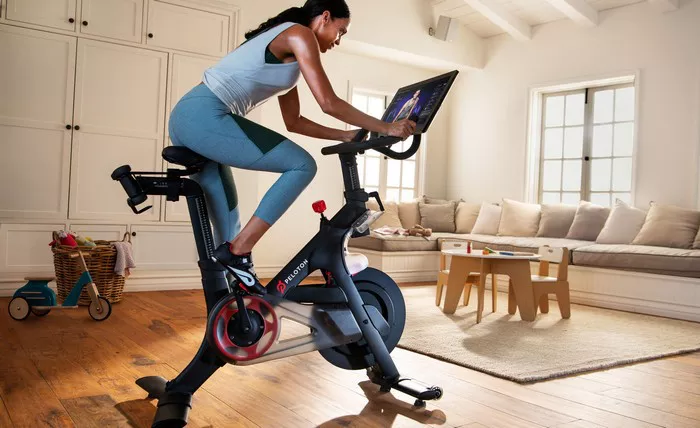Exercise bikes have become popular fitness equipment for home use, offering a convenient and effective way to improve cardiovascular health, burn calories, and build endurance. With a wide range of options available on the market, it can be overwhelming to choose the right exercise bike for your needs. In this comprehensive guide, we’ll explore the key features and factors that make a good exercise bike, helping you make an informed decision.
Understanding Different Types of Exercise Bikes
Before delving into the features of a good exercise bike, it’s essential to understand the different types available:
Upright Bikes
Upright bikes resemble traditional bicycles, with a vertical seating position. They typically have a smaller footprint and are suitable for users who prefer a more intense workout.
Recumbent Bikes
Recumbent bikes feature a reclined seating position with a backrest, making them more comfortable for users with back issues or those who prefer a less strenuous workout.
Spin Bikes
Spin bikes, also known as indoor cycling bikes, closely mimic the feel of riding a road bike. They often feature a heavy flywheel and are popular for high-intensity interval training (HIIT) workouts.
Dual-Action Bikes
Dual-action bikes incorporate upper body workout features such as moving handlebars, providing a full-body workout experience.
Key Features of a Good Exercise Bike
Adjustability
A good exercise bike should offer adjustable seat and handlebar positions to accommodate users of various heights and body types. Adjustable resistance levels are also essential for users to customize their workout intensity according to their fitness level and goals.
Comfort
Comfortable seating and ergonomic design are crucial for an enjoyable workout experience, especially for longer sessions. Look for features such as padded seats, adjustable seat angles, and cushioned handlebars to minimize discomfort and prevent strain.
Stability and Durability
A sturdy and stable frame is essential for safety and durability. Choose an exercise bike with a robust construction and a weight capacity that exceeds your body weight to ensure stability during vigorous workouts.
Smooth and Quiet Operation
Smooth and quiet operation is essential for an uninterrupted workout experience, especially if you plan to exercise while watching TV or listening to music. Look for exercise bikes with high-quality magnetic or belt-driven resistance systems, which provide smooth and virtually silent operation.
Resistance System
The resistance system determines the intensity of your workout and the range of resistance levels available. Exercise bikes may feature magnetic resistance, friction resistance, or air resistance systems, each offering unique benefits in terms of smoothness, adjustability, and maintenance requirements.
Console Features
Modern exercise bikes often come with built-in consoles or LCD screens that display workout metrics such as speed, distance, time, calories burned, and heart rate. Look for bikes with easy-to-read displays, intuitive controls, and built-in workout programs to track your progress and stay motivated.
Safety Features
Safety should always be a priority when choosing an exercise bike. Look for features such as adjustable pedal straps, emergency stop buttons, and stable footprints to prevent accidents and injuries during workouts.
Portability and Storage
If space is limited, consider the portability and storage options of the exercise bike. Look for models with built-in transport wheels for easy relocation and compact folding designs for convenient storage when not in use.
Additional Features
Some exercise bikes come with extra features such as built-in speakers, USB charging ports, tablet holders, and wireless connectivity for streaming workouts or entertainment content. While these features are not essential, they can enhance the overall workout experience and convenience.
Factors to Consider When Choosing an Exercise Bike
Budget
Exercise bikes are available at various price points to suit different budgets. Determine your budget range and prioritize features that are most important to you, such as adjustability, comfort, or console features.
Fitness Goals
Consider your fitness goals and exercise preferences when choosing an exercise bike. If you enjoy high-intensity workouts, a spin bike or dual-action bike may be more suitable. If you prefer a more comfortable and low-impact workout, a recumbent bike may be the better option.
Space and Storage
Consider the available space in your home and the size of the exercise bike. Measure the dimensions of the bike and ensure that it fits comfortably in your designated workout area. If space is limited, opt for a compact or foldable design for easy storage.
User Experience and Reviews
Research user reviews and ratings of different exercise bike models to gauge their performance, durability, and overall user satisfaction. Pay attention to feedback regarding comfort, stability, noise levels, and ease of assembly and use.
Warranty and Customer Support
Check the warranty coverage and customer support services offered by the manufacturer or retailer. A good warranty provides peace of mind and ensures that any potential issues or defects are promptly addressed by the manufacturer.
Conclusion
Choosing the right exercise bike involves considering various factors such as type, adjustability, comfort, stability, resistance system, console features, safety, portability, and budget. By understanding your fitness goals, space limitations, and personal preferences, you can select an exercise bike that meets your needs and provides an enjoyable and effective workout experience. Whether you opt for an upright bike, recumbent bike, spin bike, or dual-action bike, investing in a quality exercise bike is a valuable step towards achieving your fitness goals and improving your overall health and well-being.
[inline_related_posts title=”You Might Be Interested In” title_align=”left” style=”list” number=”6″ align=”none” ids=”9199,9191,9117″ by=”categories” orderby=”rand” order=”DESC” hide_thumb=”no” thumb_right=”no” views=”no” date=”yes” grid_columns=”2″ post_type=”” tax=””]

































